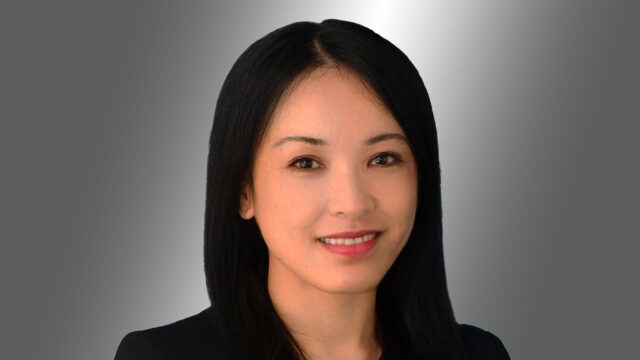Lina Lim has experienced several sides of the financial and investment industry during her career. This has given her a firm perspective on the needs of her clients across the wealth spectrum.
“Clients require the best advice, expertise and platforms, and HSBC is committed to being their number one choice. Simply, we aim to provide the best client experience,” Lim told FSA in an exclusive interview.
She began her career as an auditor at EY in Kuala Lumpur before spending 12 years as a senior portfolio manager at a few top tier fund houses including Sumitomo Mitsui Asset Management in Hong Kong.
Lim, who is a CFA charter holder, next worked for more than 13 years in various roles including as Apac regional head of managed solutions at JP Morgan Chase, based in Hong Kong and Singapore,
For the past five years, Lim (pictured) has been managing director, Apac regional and Hong Kong head of discretionary and funds, investments and wealth solutions, at HSBC Global Private Banking (GPB).
“A wealth manager’s perspective is very different from that of an asset manager. The latter focuses narrowly on individual portfolios and strategies, whereas a wealth manager views their individual clients’ needs and expectations through a broader lens,” she said.
“We provide a service across the wealth continuum from retail to ultra-high net worth individuals. We prefer asset managers who also have the ability to offer products for the whole investor range.”
Selection process
HSBC GPB has access to an open architecture, which typically garners 150-200 funds to its platform, which are selected after quantitative screening of key metrics, fundamental analysis and meetings with the managers. Asset managers are chosen based on their investment philosophies, processes, and internal cultures.
In addition, HSBC GPB has the scalability to co-create strategies with asset managers to distribute to clients across that wealth range.
“For instance, we had a recent global campaign to co-develop a product that could generate an incremental income stream for clients from more flexible and unconventional sources,” she said.
The co-developer and partner was the Schroders Dynamics Income strategy, which was unconstrained and mandated to earn a high yield from mostly investment grade bonds. It has as gross redemption yield of around 7% and was available as a UCIT exclusively for HSBC GPB’s clients for a period, before it was offered to the general public.
“This scalability is one of greatest advantages; we can offer our products and strategies worldwide,” Lim said.
There is a large management team in London that guides fund selection, but it is supplemented by regional teams, such as in Asia, who can best understand local needs and how they can be met.
Client focus
HSBC GPB’s discretionary portfolios invest directly into funds, and typically they include a sleeve of alternatives and allocations to private markets if that is compatible with the client’s desire for a higher risk appetite.
“Actively managed funds are usually the most effective way to gain exposure to markets,” said Lim.
“But rather than marketing generic ‘solutions’, we look at each client’s particular circumstances and goals, including internal rate of return (IRR) objectives, and help plan their overall wealth strategy. This process applies across the spectrum from retail to ultra-high net worth individuals,” said Lim.
Relationship managers are trained to take this approach, rather than simply selling products to generate fees. HSBC GPB has a large team of product specialists to support the fund selectors, and investment counsellors who conduct regular client meetings.
“We also offer digital tools on mobile, such as ‘Future Planner’ to help clients manage their wealth and risk exposure to achieve their long-term goals,” said Lim.
“The wealth manager can optimise a strategy towards achieving their clients’ IRR goals.”
Application of CIO views
Nevertheless, outlooks and hence recommendations are largely aligned with the view of the HSBC CIO, which makes adjustments on a regular basis.
“Macroeconomic fundamentals are improving, which points to interest rate cuts and either a ‘soft landing’ or ‘no-landing’ in the US. Corporate earnings in the US are also likely to beat analysts’ forecasts, and we also expect strong earnings in Asean and India,” said Lim.
Preferred sectors include industrial and consumer stocks, and the CIO backs infrastructure (both technology and physical) stocks to provide sustainable income. ESG remains a major theme, and Lim and her team receive many enquiries from clients about suitable funds and strategies.
“There are many risks, some of which are already apparent, and others can easily emerge. The aim is to alleviate current and potential risk by avoiding concentration in asset classes, sectors, or countries,” said Lim. “The key is to diversify.”
Currently, there are four principal strategies.
First, broaden equity exposure by geography and sector, away from a concentrated portfolio of US tech stocks. Second, “put cash to work” in bond markets in the expectation of US interest rate cuts.
Third, make allocations to private markets – such as infrastructure and private credit – to diversify risk and tap into sources of return elevated by their illiquidity premia.
Asia opportunities
Finally, seek strong opportunities in Asia. These include India, with its roaring economy, improvements to corporate governance and the momentum of its stellar stock market performance.
Moreover, “Southeast Asian countries have enormous potential as incomes rise for a growing middle-class keen to spend in the consumer discretionary, healthcare and technology sectors,” said Lim.
Lim is also impressed by the corporate governance measures underway in Japan and likes Japanese exporters which are benefiting from a weak yen. South Korea remains a major player in technology and has a burgeoning consumer market and has less political risk than its regional technology rival, Taiwan. Nevertheless, her clients gain exposure to Taiwan through pan-Asian equity funds.
And although Lim recognises the long-term potential for mainland China companies, negative headlines, debt issues and other short term economic headwinds means she advises clients to stay invested in the market through well-diversified, actively managed Greater China or pan-Asian strategies.
















